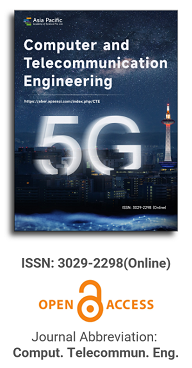
Issue release: 30 June 2025
The rapid expansion of cloud computing within business environments, along with the increasing complexity of organizational deployments, has led to a surge in cloud-based attacks on computer networks. These attacks exploit security vulnerabilities and systemic breaches. This study explores robust defense mechanisms by leveraging policy-based configurations and rule enforcement on edge network devices. These mechanisms were tested using GNS3 simulations to strengthen internal and external infrastructures against critical threats such as ICMP, CDP, and port security attacks.
Issue release: 30 June 2025
Preliminary identification of cancer is still essential because it can greatly improve the chances of survival of a patient, as cancer is the leading reason of death internationally. In this study, we introduce a mixed machine learning (ML) model using support vector machines (SVM) and random forest (RF) algorithms. To improve accuracy in diagnosing cancer, classifiers such as linear regression (LinReg), support vector machines (SVM), and logistic regression (LogReg) are used. This way, the model is tested and validated using the UAE Cancer. It contains medical records of all patients, their demographic information, clinical information, and outcomes. Our results demonstrate that the hybrid model achieved 98.3% accuracy, 98.5% recall, and 0.99 AUC-ROC, outperforming individual classifiers. Policies are justiciable despite the difficulties of needing to validate findings from many datasets, make them easy to use clinically, and manage biases in the available information. Because of this study, people are considering how hybrid ML models can be beneficial in clinical care and are encouraging more research on cancer diagnostics.

Prof. Maode Ma
Qatar University, Qatar
The field of computer and telecommunications engineering is rapidly advancing, with the following being some of the latest developments.
more
We are pleased to congratulate the first anniversiry of the journal of Computer and Telecommunication Engineering (CTE).
more
Owing to the tireless dedication of the editor-in-chief, editorial board members, and the in-house editorial team, we are proud to announce the successful online launch of the first issue of Computer and Telecommunication Engineering.
Asia Pacific Academy of Science Pte. Ltd. (APACSCI) specializes in international journal publishing. APACSCI adopts the open access publishing model and provides an important communication bridge for academic groups whose interest fields include engineering, technology, medicine, computer, mathematics, agriculture and forestry, and environment.


 Open Access
Open Access
.jpg)

.jpg)
